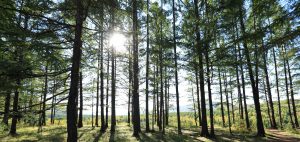
VICTORIA – New research shows Victoria’s urban forest grew between 2013 and 2019. Analysis of Light Detection and Ranging (LiDAR) data shows vegetation canopy increased by 45 hectares, which is about the size of 60 soccer fields. The research found growth in vegetation area coverage in every Victoria neighbourhood, including the downtown core.
“Over several years we’ve developed strong policies and programs to continue strengthening our urban forest now and for the future,” said Mayor Lisa Helps. “This analysis demonstrates we can continue to develop and grow as a city while also protecting and growing the urban forest necessary for public enjoyment and to address climate change and long-term resilience.”
Analysis of the 2019 LiDAR data indicates that the canopy of all trees on public and private land covers a total of 559 hectares, or roughly 28 per cent of Victoria’s land area.
The urban forest plays an important role in mitigating and adapting to climate change and extreme weather by providing shade, a buffer for high winds, and helping to manage erosion. Trees also provide habitat and homes for wildlife, create privacy, and buffer sounds. Consistent progress has been made in recent years to protect, enhance and expand the urban forest, guided by the City’s Urban Forest Master Plan adopted in 2013.
“The City is focused on ensuring the key requirements are in place to preserve and protect trees, including progressive policies and programs, leading arboriculture practices, and skilled team members,” said Thomas Soulliere, Director of Parks, Recreation and Facilities.
In 2020, the City joined the United Nations Trees in Cities Challenge and increased tree planting by 40 per cent, adding over 500 new trees in parks and on boulevards. In addition, Victoria was recently recognized internationally with a Tree Cities of the World award by the Arbor Day Foundation and the Food and Agriculture Organization of the United Nations.
The City also recently adopted a new Tree Protection Bylaw, which takes effect on July 1, 2021. The new bylaw will help further objectives outlined in the Urban Forest Master Plan, including the protection of trees on private property and the application of leading practices for long-term tree health.
Victoria’s urban forest is comprised of all trees, shrubs and groundcover on private and public land and the soils in which they grow. There are approximately 150,000 trees in parks, natural areas, boulevards, residential gardens and backyards. Roughly one quarter of the urban forest is managed by the City, while the remaining 75 per cent is on private and other public land.
LiDAR is a laser scanning technology used to generate a three-dimensional representation of the physical environment. The data acquired across Victoria was collected as part of broader provincial and regional environmental mapping initiatives. The 2013 and 2019 canopy cover maps are available to the public on the City’s interactive mapping system.


